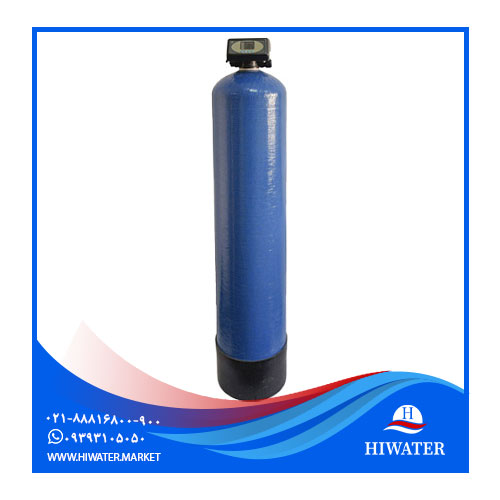Prices of HiWater Water Softeners
Prices of HiWater Water Softeners
The HiWater water softener is widely regarded as one of the highest-quality and most common water softeners available on the market. Due to its high performance and effectiveness, it is highly favored by consumers. As demonstrated, there are various models of HiWater water softeners available, differing in construction materials, capacities, and other specifications. Despite the high quality of these systems, they are priced competitively, allowing consumers to select the most suitable option for their requirements and budget with ease.
Water softeners, in general, are vital devices used to reduce minerals and ions in water. The products here come in multiple variations, including resin-based, automatic, semi-automatic, metallic, FRP, and electronic designs. When water passes through different geological layers, it picks up minerals such as magnesium and calcium. As a result, the water becomes “hard” and these minerals can cause scaling when interacting with equipment and machinery. Drinking this water leads to a range of health problems, such as kidney stones, and can significantly degrade the quality of products in industries like textile and dyeing. Therefore, softening the water is crucial, and engineers have developed various methods to remove these minerals, with the use of water softeners being one such solution. A water softener is a device designed to reduce the hardness of water.
Advantages of Using HiWater Water Softeners
As hard water enters into cooling systems, such as chillers, cooling towers, and other thermal management equipment, it not only reduces their efficiency but, in some cases, may even lead to system failure. However, this issue can be addressed by utilizing a water softener.
By using a water softener, the water quality improves, offering numerous daily benefits, such as enhanced detergent effectiveness, relief from dry skin and hair compared to using hard water, and prevention of stains on fabrics and dishes.
The color quality of the product improves significantly in industries like dyeing and textile manufacturing.
Increasing efficiency and performance in various equipment, particularly heating systems.
From a health perspective, it can help reduce the occurrence of cardiovascular and kidney diseases.
By preventing the emergence of scale within pipes and connectors, the pressure within the pipes is maintained.
And so on.
Components of HiWater Water Softeners
Here, we examine the components of a resin-based water softener. The main components of these systems include:
Resin: Resin is a chemical material that forms the core of the water softener. It is responsible for removing the ions from the water. The quantity of resin in the softener varies depending on the concentration of minerals and other factors in the water. To prevent resin loss, ion nozzles are used inside the resin softeners, and silica layers are employed to filter out larger suspended particles in the water.
Tank: This is the external part of the softener, within which the water purification process occurs. Given the importance of durability, the tank is typically made from a stainless steel carbon sheet to ensure strength and resilience.
Manometer: A manometer is used to regulate the input pressure into the water softener.
Saltwater Solution Tank: Over time, the resin in the water softener loses its effectiveness due to mineral buildup. To address this, the best solution is to regenerate the resin. Therefore, a PVC tank, which contains salt and water, is used to facilitate this regeneration process. When connected to the main unit, this tank helps clean and restore the resin.
Nozzles: The nozzles in resin-based water softeners are typically made from materials such as PVC, brass, or plastic. Their primary function is to collect the treated water.
And so on.
Operation of HiWater Water Softeners
When the water softener is activated, water begins to flow from the top of the tank into its interior. As the water moves through the resin particles, it loses the minerals it contains, primarily calcium and magnesium. The resin particles, through the ion exchange process, capture these minerals and release sodium ions into the water. This process converts hard water into soft water. Afterward, the water flows through the silica bed, where it loses any remaining particles. Finally, the purified water is collected through nozzles.
Purchasing a HiWater Softener
When selecting and purchasing a water softener, there are various important aspects to consider that will help you choose a high-performance and efficient system. The most important factors are as follows:
Determining your budget.
Defining the capacity.
Considering the level of hardness in the water.
Assessing the flow rate of water entering the softener.
And so on.
With the increasing demand for water softeners in residential and industrial applications, as well as the variety of water softeners, you can contact the numbers listed on the website to take advantage of free advice from sales specialists and experience the best purchase.
Showing 1–8 of 27 results
-

سختی گیر رزینی 120000 گرین اتومات هایواتر با منبع FRP
Read more -

سختی گیر رزینی 120000 گرین اتومات هایواتر با منبع فلزی
Read more -

سختی گیر رزینی 120000 گرین نیمه اتومات هایواتر با منبع FRP
Read more -

سختی گیر رزینی 120000 گرین نیمه اتومات هایواتر با منبع فلزی
Read more -

سختی گیر رزینی 150000 گرین اتومات هایواتر با منبع فلزی
Read more -

سختی گیر رزینی 150000 گرین نیمه اتومات هایواتر با منبع فلزی
Read more -

سختی گیر رزینی 180000 گرین اتومات هایواتر با منبع FRP
Read more -

سختی گیر رزینی 180000 گرین اتومات هایواتر با منبع فلزی
Read more

